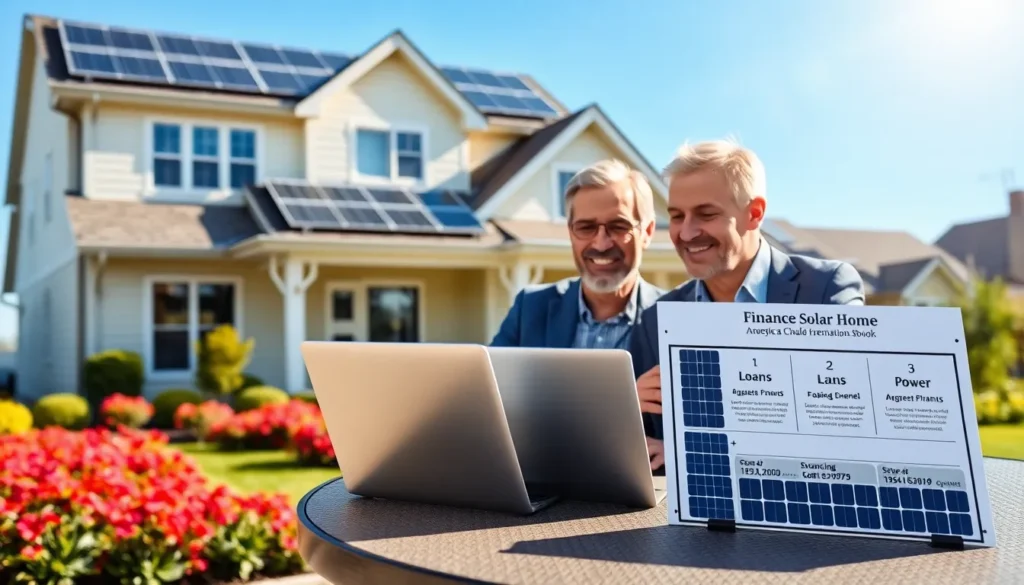Table of Contents
ToggleAs homeowners increasingly seek sustainable solutions, the demand for solar energy continues to rise. But, financing a solar energy system can be a challenging job. This is where “LotsOfPower Files Finance Solar Home eBook” comes into play, providing a comprehensive guide to understanding and navigating the complexities of solar home financing. In this text, explore the fundamentals of solar financing, the various options available, and how to effectively leverage resources like LotsOfPower to make informed decisions about solar investments.
Understanding Solar Home Financing

Understanding solar home financing is crucial for homeowners looking to invest in renewable energy solutions. With solar energy systems often requiring significant upfront investment, financing options can help mitigate immediate financial burdens. By educating oneself on the various financing models, such as loans, leases, and power purchase agreements (PPAs), individuals can determine what aligns best with their financial goals and constraints. This understanding not only empowers homeowners to make informed choices but also enhances their potential return on investment (ROI) when it comes to energy savings and property value appreciation.
Types of Solar Financing Options
There are several types of solar financing options that homeowners can explore. These options include:
- Solar Loans:
Homeowners can secure loans specifically for solar installations. These loans often come with attractive interest rates and flexible repayment terms. They allow owners to purchase solar panels outright, making them eligible for various rebates and tax credits.
- Leases:
In a solar lease, the homeowner pays a fixed monthly fee to use the solar system without taking ownership. This can be a good option for those who prefer a predictable cost structure and wish to avoid upfront payments.
- Power Purchase Agreements (PPAs):
With a PPA, homeowners buy electricity generated by a solar energy system installed on their property at a predetermined rate. This arrangement often requires little to no upfront investment and can result in lower electricity costs.
- Cash Purchase:
For those who have the financial means, purchasing a solar system outright is the most straightforward option. This choice typically returns the highest savings over time due to increased eligibility for incentives and immediate energy savings.
How to Choose the Right Financing for Your Solar Home
Choosing the right financing for a solar home requires careful consideration of several factors. Homeowners should assess their financial situation, including credit ratings, available capital, and long-term financial goals. Here are steps to help navigate this process:
- Evaluate Financial Health:
Before committing to any financing option, it is important to have a clear understanding of one’s financial health. Reviewing credit scores can give insight into what interest rates and terms may be available for loans.
- Identify Energy Needs:
Understanding one’s energy consumption will help in determining the size and type of solar system required, which in turn influences financing needs.
- Research Options:
Each financing option has its pros and cons. Homeowners should research each type to understand the long-term implications, like total costs, impacts on property value, and potential savings on energy bills.
- Consult with Professionals:
Engaging with solar financing experts or financial advisors can provide insights tailored to individual situations. They can help advocate for favorable financing terms or incentives.
Benefits of Financing Solar Energy
Financing solar energy systems comes with a multitude of benefits. Some key advantages include:
- Lower Upfront Costs:
With various financing options available, homeowners can significantly reduce or eliminate the need for large upfront payments, making solar energy more accessible.
- Incremental Savings:
Solar financing allows for immediate energy savings that can offset monthly payments, often resulting in a net positive cash flow right from the start.
- Increased Property Value:
Solar installations typically increase property values, which can yield substantial returns on investment when selling the home.
- Incentives and Tax Credits:
By financing rather than leasing outright, homeowners may be able to take advantage of federal, state, and local incentives that can further reduce costs.
- Environmental Impact:
Financing solar energy aligns with a commitment to sustainability, contributing to reduced carbon footprints and a cleaner environment.
Integrating LotsOfPower Files in Solar Financing
The “LotsOfPower Files” acts as a valuable resource for homeowners seeking to navigate the solar financing landscape more effectively. This collection offers detailed insights into financial options, installation processes, and case studies.
- Comprehensive Guides:
With step-by-step instructions and explanations, homeowners can understand how to harness financing options optimally.
- Calculator Tools:
Many resources, including calculators, allow users to simulate potential savings based on different financing scenarios, fostering well-informed choice-making.
- Success Stories:
Real-world examples from the LotsOfPower Files illustrate successful financing ventures, which can inspire and motivate new solar adopters.
Real-Life Examples of Successful Solar Financing
Several homeowners have successfully navigated the solar financing process, demonstrating the various benefits achievable through effective financial strategies.
- The Martinez Family:
In California, the Martinez family opted for a solar loan to finance their installation. They reported a significant reduction in their monthly energy bills and saw an increase in their home’s value, allowing them to benefit from both immediate savings and future returns.
- The Wang Couple:
Choosing a PPA in Florida, the Wangs were able to install solar panels with minimal upfront costs. Their agreement allowed for reduced energy rates and eliminated concerns about maintenance costs, showcasing the efficiency of PPA arrangements.
Such stories not only highlight the financial viability of solar investments but also underscore the long-term sustainability benefits for families.
Conclusion
Solar financing is a crucial aspect of transitioning to renewable energy. The “LotsOfPower Files Finance Solar Home eBook” serves as an invaluable resource for homeowners seeking to understand their options thoroughly. By exploring different financing methods, selecting the most suitable option, and leveraging tools and case studies, individuals can make informed decisions that lead to sustainable energy use and significant financial savings.







